UKRAINE: All Is Far From Quiet On The Eastern Front
Glen Johnson Reports From Ukraine. 26.09.2023
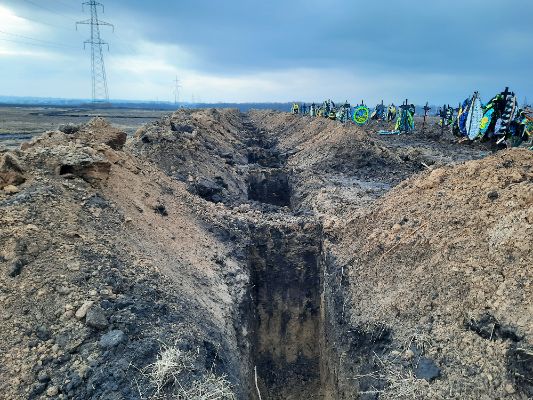
ZAPORIZHZHIA, Ukraine -- At the end of August, Ukraine’s foreign minister, Dmytro Kuleba, told those criticizing the speed of his country’s ‘much anticipated counter-offensive’ to “shut up”.
It is always nice to see the adults in the room.
Of course, criticizing the speed of Ukraine’s offensive operations is misguided: the Russian army built formidable defenses in Zaporizhzhia over the past winter.
The so-called “Surovikin line” – a 120-kilometer-wide death trap, densely mined and replete with anti-tank ditches, dragon’s teeth and layers of trenches – was deliberately constructed to exact a horrific toll on advancing Ukrainian troops.
And that is what has happened over the past four months of Ukraine’s offensive operations. For the most part, Ukraine’s forces remain in the screening zone before the first defensive line.
They are bogged down in a meat grinder, having made only marginal gains and “breached” the first defensive line in one location, near Rabotino (pre-war population of about 500 people) where Ukrainian soldiers have been funneled into low-ground positions and are assailed from the high ground on three sides.
They are suffering horrendous losses.
Local media recently reported that in the Poltava region, for every 100 men mobilized last autumn, only 10 to 20 percent remain, citing the acting head of the Poltava regional military registration and enlistment office, Lieutenant Colonel Vitaly Berezhnoy.
The rest are dead, wounded or missing.
Even with air superiority and a full-strength army experienced in combined arms, the Surovikin line would present a serious challenge. But Ukraine does not have anything even remotely approaching that and NATO has provided crash-courses for the main assault groupings.
But what do NATO – or New Zealand – military trainers know about fighting the kind of war being waged in Ukraine?
The collective West imparting its military ‘expertise’ to Ukrainians would be laughable if it was not so tragic. But Western leaders appear lost to hubris and dangerously unmoored from reality.
“We had drills together and we asked the Germans: ‘How do you pass through a minefield?’ And they answered: “We go around it,” one Ukrainian soldier told German broadcaster Welt. “On their maps, minefields are 200m by 100m. Here, it is nothing like that. We are talking hectare after hectare.”
The collective West looks out of its depth in Ukraine. And arrogance, let alone stupidity, is not an excuse for the horror they have played a significant role in unleashing here.
The real question is: are we all going to be incinerated in nuclear flames due to Western intransigence? Nyet means nyet.
Reports last Sunday that the UK was planning to send soldiers into Ukraine to train and support troops – which were quickly backpedaled – coupled with media messaging in the West conditioning the public towards accepting a “long war” strongly suggests that Western leaders are simply incapable of learning from glaring mistakes.
“CASUALTY AVERSE”
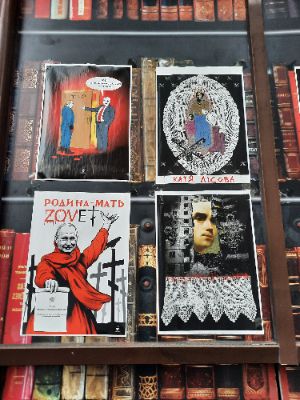
Simply put, the West views Ukraine, which is entitled to defend itself, as a battering ram, with the goal of weakening Russia and reclaiming Crimea, which the West, particularly Britain, clearly covets and which much of this war revolves around.
As one teacher in Dnipro said during an interview in Dnipro: “They [NATO] want to put their ships in Sevastopol…a lot of us think this, but we can’t speak publicly.”
When the former Prime Minister and governor of Donetsk, Viktor Yanukovych, ascended to the presidency in February 2010 his first major foreign policy move was to extend Russia’s lease of the naval base at Sevastopol, which was due to expire in 2017, by an additional 25 years.
Opposition politicians hurled smoke grenades into parliament in response. Yet, the extension was met with some 60% public approval, reports at the time indicated.
At this point, it is fair to ask to what extent this offensive can even be called “Ukrainian”? The West is very clearly supplying intelligence and targeting support.
Midway through August, NATO’s most senior military leaders met Ukraine’s military chief, Valerii Zaluzhny, and his entire command team in a five-hour meeting on the Ukraine-Poland border.
The West was growing frustrated with Ukraine dispersing troops and armor along the front. It wanted Kyiv to focus on the crown jewel: severing the land bridge and retaking Crimea. “I think you can see they are [now] focusing on the Zaporizhzhia front,” one insider told The Guardian following the meeting.
And it is violence on a massive scale. Ukraine will likely launch one final assault before winter, in Zaporizhzhia and Kherson.
Incredibly, midway through August, The New York Times cited anonymous US officials complaining that Ukraine had become “casualty averse”. These maniacs simply do not care about the devastating human toll.
In a ground floor office space in Zaporizhzhia, volunteers sort through medical supplies. It can be difficult for soldiers to receive supplies from central stockpiles in a timely fashion.
The group – many are doctors and nurses – fundraise, talk with local commanders, then drive out to Orikhiv a few times a week to deliver medical aid to the army and evacuate any civilians who wish to leave. And one thing is in particular demand: tourniquets.
“[Since the beginning of the counter-offensive] the volume of supplies we need are much bigger,” said Olga, who leads the organisation, sat surrounded by crutches and elastic bandages, sterile adhesive dressings and stretchers. “It is very hot in Zaporizhzhia now. It is like ‘Bakhmut 2’.
The real knife in the back is that while everyday Ukrainians do all they can to support their soldiers, corruption is rampant in the army and - many Ukrainians believe - in Zelensky’s administration.
Recently, the head of Ukraine’s Medical Forces Command’s procurement department, Volodymyr Prudnikov, was accused of supplying thousands of Chinese medical kits to soldiers, while passing them off as NATO standard. Some £1.5 million worth of contracts reportedly were awarded to a company co-founded by his daughter-in-law.
That is only the tip of the iceberg. There are credible reports of container loads of weapons disappearing enroute to the front, schemes to inflate the amounts paid for the provision of food for the army, and a most brutal racket to extort fighting aged men being called up to service.
“Can you help me get some documents so that I’m not sent to die in the trenches?” a contact from Kramatorsk, near the Bakhmut death-pit, wrote via a messaging app last week. “The process of mobilization here is worse and more violent than in Russia. At least, if I have some kind of document, there is more chance to escape the man hunters.”
Early last month, Ukraine’s defense minister, Oleksii Reznikov, resigned over rampant corruption in his ministry, though it looked more like a PR stunt ahead of Zelensky’s visit to the UN General Assembly meeting on September 19, and a means of trying to temper widespread public fury. It may also herald a much harder line on mobilization.
As for Reznikov, he was rumoured to be taking up a new role at the Ukrainian embassy in London, though local media reports have recently contradicted that. “It was an honour to serve the Ukrainian people,” wrote Reznikov on Twitter, “for the last 22 months, the toughest period of Ukraine’s modern history.”
It is safe to say that Reznikov will not be on a frontline any time soon.
“There needs to be thorough investigations and punishments. The higher the position, the more severe the punishment,” said Alex, a martial artist in Kryvi-Rih, Zelenksy’s hometown. “Such behaviour makes the entire population of Ukraine furious.”
In many ways, the sense is that things have gone badly awry in Ukraine.
The New York Times recently reported that Moscow had claimed more territory than Ukraine over the course of this year.
Meantime, Kiev, sorry, Kyiv, is likely losing men at twice the rate – at least – of Moscow. Millions of Ukrainians will not return the country, which is now a Western dependency, littered with landmines and unexploded ordnance.
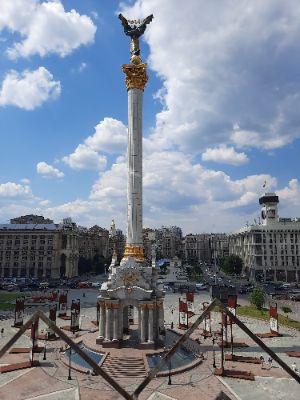
MEAT GRINDER
Tens of thousands of soldiers have lost limbs. Over the past 19 months of fighting, some 300,000 Ukrainians have become disabled. “Today there are three million [disabled persons] in Ukraine,” Minister of Social Policy Oksana Zholnovich recently announced. “A year and a half ago, there were 2.7 million.”
The savaging of Ukraine’s fighting-age men will have disastrous consequences in the years and decades to come. The West will certainly not be as keen to pick up the tab for that, as it was to send mind-boggling amounts of weaponry into the country.
Numerous volunteer organisations note that support from the Western public is diminishing.
“The level of donations and the attention from Western public that are willing to help is now much lower,” said Olga, from the volunteer group in Zaporizhzhia. “We are now dipping into our own money.”
According to Mariya, 40, from Kharkiv, who is attempting to establish a therapy initiative for soldiers in any post-war environment, even local support is dropping off and “fundraising is tough.”
“Everyday people are tired of donating regularly,” she said. “The war is mostly far enough away for people to forget about it.”
What began as justified defensive aid – Moscow’s invasion is illegal, immoral, and most definitely provoked – morphed into the provision of ever more lethal and sophisticated military hardware, with the explicit goal of collapsing Russian President Vladimir Putin’s regime. The West has recklessly crossed its own red lines, a text-book case of mission creep.
What was unthinkable at the beginning of the war – tanks, fighter jets, cluster munitions, long-range missiles – is now routine. The West is trapped in an escalatory spiral of its own decades-long making.
And the Ukrainian leadership knows it, with Kuleba brazenly demanding Taurus missiles from Germany.
“You will do it anyway – it’s just a matter of time,” a petulant Kuleba told German Foreign Minister Annalena Baerbock during a recent visit to Kiev, “and I don’t understand why we are wasting time.”
He really is insufferable.
Regardless, the Zelensky government, which appears to have totally capitulated to the ultranationalists/ neo-fascists, appears very keen to escalate the war into a direct NATO-Russia confrontation. A recent Guardian report noted that Ukraine has been pushing for the West to launch strikes on Iran and Syria, and even inside Russia.
Recent attacks on Crimea – which Russia will go nuclear over – as well as implicit threats to blow-up the Zaporizhzhia Nuclear Power Plant (ZNPP) by Zelensky’s military intelligence chief, Kyrylo Budanov, should reveal to any straight-thinking person how dangerous Kyiv has become.
UNRELIABLE ALLIES
Ukraine is finding out the hard way what getting into bed with the West means. But it cuts both ways.
In a recent interview with The Economist, Zelensky was clearly concerned that the West would curtail support. He warned that it would be difficult to predict how the millions of refugees in Europe, who had “behaved well”, would react to feeling abandoned.
The Economist quoted Zelensky as arguing it would not be a “good story” for Europe if it were to “drive these people into a corner”.
The Ukrainian radicals have a long history of employing violence for political purposes.
During the interwar period, the Organisation of Ukrainian Nationalists (OUN) carried out a number of striking assassinations, notably the killing of Bronislaw Pieracki, the Republic of Poland’s interior minister, gunned down in broad daylight by an OUN militant operating on instructions from Stepan Bandera, an OUN leader and notorious fascist who envisioned an ethnically homogenous one-party state.
Following the Second World War, Ukrainian radicals – who had collaborated with the Nazis and were vehemently anti-communist – were recruited from refugee camps in Europe by Western intelligence agencies, particularly the OSS and CIA, which used them to run destabilization campaigns behind Soviet lines.
The ultranationalist ideology was preserved by elements in the diaspora – who constructed a revisionist history, recasting themselves as freedom-loving democrats – particularly in the US and Canada. Their myths and distortions were reintroduced into Ukraine following the Soviet dissolution. The poison began to spread.
Ivan Katchanovski, a political scientist at the University of Ottawa, has done extensive research into the Maidan uprising of 2013-14. His research points to elements in the far-right, the OUN’s ideological progeny, as culpable for much of the violence that led to the collapse of Yanukovych’s government and the ensuing, spiraling chaos that has beset Ukraine.
“Careful analysis of publicly available evidence revealed during the Maidan massacre trials and investigations, shows beyond reasonable doubt that the four killed and several dozen wounded policemen, and nearly all of the 49 killed [on February 20, 2014] and 157 wounded Maidan protesters, were shot by snipers in Maidan-controlled buildings and areas,” wrote Katchanovski in a recent research paper. “The far-right involvement in the Maidan massacre of the police and the protesters and the failure to investigate, prosecute, and punish the far right for this mass killing resulted in the far right attaining oversize influence in Ukrainian politics and de facto immunity for other violence or threats of violence.”
THE POD PEOPLE
Zelensky’s recent visit to the US stood in stark contrast to his visit in December – after successful, but personnel expensive, operations that reclaimed swathes of occupied territory in Kharkiv and Kherson –where he received a hero’s welcome and delivered a speech to congress.
This time, his address to the UN General Assembly was poorly attended and US House speaker Kevin McCarthy revealed that, “Zelensky asked for a joint session, we just didn’t have time. He’s already given a joint session.”
He walked away with a relatively paltry US$300 million military aid package.
Meantime, Poland’s president, Andrzej Duda, said that “Ukraine is behaving like a drowning person clinging to anything available,” local media reported. “A drowning person is extremely dangerous, capable of pulling you down to the depths.”
It only got worse from there.
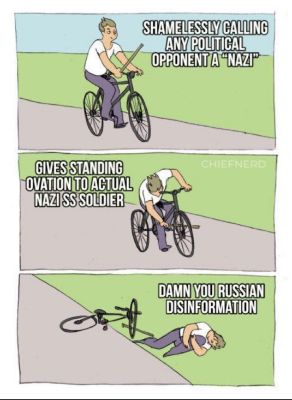
In late September, following a Zelenksy speech in Canada’s parliament, a 98-year-old Ukrainian World War Two veteran, Yaroslav Hunka, received standing ovations from members of the House of Commons.
Stood aside Canadian Prime Minister Justin Trudeau, Zelenksy clapped and raised a fist in appreciation of the war veteran. Canada’s deputy prime minister, Chrystie Freeland, beamed as she applauded Hunka.
Speaker Anthony Rota described Hunka, who ended up in an Italian prisoner-of-war camp, as a “veteran from the Second World War who fought for Ukrainian independence against the Russians” and as a “Ukrainian hero, a Canadian hero…we thank him for all his service”.
In a 2011 article, Hunka described travelling “around the world like the tribe of Israel” following the war.
“Our mission was difficult, because the world knew very little about us, and what it did know, it was falsely presented by our neighbors,” wrote Hunka. “Slowly, through hard work, personal contacts and cultural exchange, we attracted the general opinion of the Western peoples to ‘our side’.”
The problem is that Hunka is an unrepentant Nazi.
He fought in the brutal 14th SS-Volunteer Division “Galicia”. Members had to swear personal allegiance to Hitler and operated under Nazi command.
It is worth describing what many Ukrainian “freedom fighters” got up to during the Second World War.
Testimony from a US National Archive’s study entitled Hitler’s Shadow, which also described how Western intelligence agencies recruited Nazi collaborators, even helping some bypass immigration checks, after WW2: “Bandera men…are not discriminating about who they kill; they are gunning down the populations of entire villages…Since there are hardly any Jews left to kill, the Bandera gangs have turned on the Poles. They are literally hacking Poles to pieces. Every day…you can see the bodies of Poles, with wires around their necks, floating down the river Bug.”
Regarding the Galician Division, a report by Poland’s Institute of National Remembrance into the massacre at Huta Pieniacka on Feb. 28, 1944, illustrates its genocidal character.
The assault began with shelling, before the unit entered the village, which it ransacked. A local commander was burned alive in the square outside the local church. Others were herded into barns and houses, which were sprayed with bullets, before being set ablaze. Some 800 people were slaughtered.
“SS Galician soldiers and groups of civilians of Ukrainian nationality entered Huta Pieniacka. They shot at residents who tried to escape. They were commanded by a German officer with the rank of captain. The remaining residents were removed from their homes and brought in groups to the church. It was done in a very brutal way, for example: 70-year-old Rozalia Soltys had her stomach slit open with a bayonet, another woman’s newborn was torn from her arms and thrown against a wall, and a pregnant woman was shot.”
It belies belief that neither Zelensky nor Freeland did not know exactly who they were applauding in the Canadian House of Commons. Freeland is steeped in western Ukrainian ultranationalism (her grandfather edited a Nazi newspaper) and its poisonous myths.
She is close to a number of ultranationalist Ukrainian lobbying and front groups, notably the Ukrainian Canadian Congress.
For his part, Trudeau attempted to shift the focus onto Russian disinformation, as if the West does not engage in similar campaigns on a scale at least matching anything Moscow does. Iraqi WMDs, anyone?
“It is extremely troubling to think that this egregious error is being politicised by Russia and its supporters,” Trudeau told reporters, “to provide false propaganda about what Ukraine is fighting for.”
At this point, Trudeau just is Donald Sutherland’s character at the end of the 1978 film, Invasion of the Body Snatchers – wild-eyed, an accusatory finger outstretched, head tilted back as it emits a ghastly alien shriek.
Regardless, the rapturous reception Hunka received in the Canadian parliament has created an environment where the West’s recruitment of Nazis and their collaborators – Cold War warriors used both at home and abroad – and the provision of safe haven, is front and center.
How deep is the rot?
And, most importantly, to what extent has it contributed to the disaster unfolding in Ukraine?
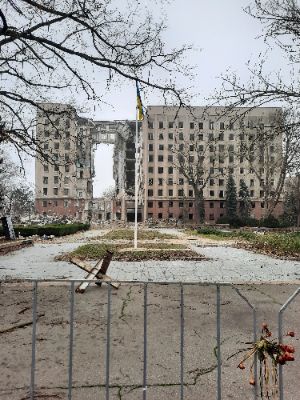
ENDS
Glen Johnson is a New Zealand journalist who has worked as a foreign correspondent for 14 years, predominantly out of the Middle East, North Africa and Eastern Europe.
His work has appeared in The Chicago Tribune, The Los Angeles Times, The New York Times, Vice, The Daily Telegraph, The Guardian, Reuters, Le Monde Diplomatique, Balkan Insight, Al Jazeera, The New Zealand Herald and Metro among others. He first wrote for Scoop while a graduate journalism student at Canterbury University in 2008.


 Eugene Doyle: The Fall Of Saigon 1975 - Fifty Years Of Repeating What Was Forgotten
Eugene Doyle: The Fall Of Saigon 1975 - Fifty Years Of Repeating What Was Forgotten Peter Dunne: Dunne's Weekly - Trump's Tariffs Still Pose Risks For New Zealand
Peter Dunne: Dunne's Weekly - Trump's Tariffs Still Pose Risks For New Zealand Keith Rankin: Barbecued Hamburgers And Churchill's Bestie
Keith Rankin: Barbecued Hamburgers And Churchill's Bestie Gordon Campbell: On Why The US Stands To Lose The Tariff Wars
Gordon Campbell: On Why The US Stands To Lose The Tariff Wars Eugene Doyle: Before It’s Too Late - Reimagine New Zealand’s Military Future
Eugene Doyle: Before It’s Too Late - Reimagine New Zealand’s Military Future  Binoy Kampmark: Gender Stunts In Space - Blue Origin’s Female Celebrity Envoys
Binoy Kampmark: Gender Stunts In Space - Blue Origin’s Female Celebrity Envoys